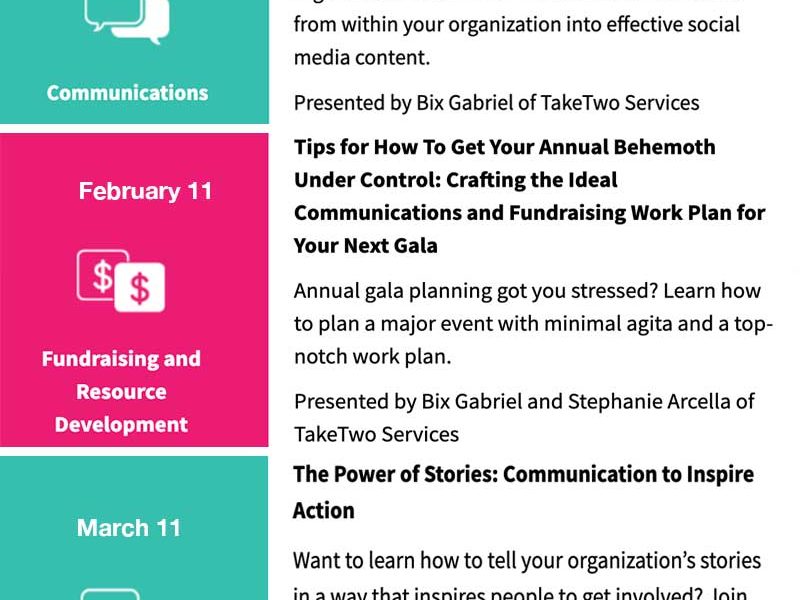
4 Social Media “To Do’s” For The 4th Quarter
by Padmini Mangunta
Most of us tend to think of the last few months of the year in terms of sadness (“there goes another year”) or eagerness to start anew (“Let’s just brush last year’s mess under the rug, shall we?”).
In nonprofit terms, the same tendencies follow suit — rather than taking a good, hard look
But as the last quarter of the year gets rolling, this is your opportunity to stop, take a deep breath, and analyze!
1. Take Stock
Gather insights and metrics from any and all social media platforms. Have a Tumblr platform that’s been languishing? Pull it out of the closet and dust off the cobwebs.
2. Did you set any benchmarks or goals for success?
If the answer is a guilty “Oops, sure didn’t”, don’t worry. We’ll work around it below. But if the answer is yes, great news!
If you set benchmarks at the same time last year, you have a fairly easy road ahead. Take a look at your high points and low points and make note of them. Anything that got a strong reaction, whether positive or negative, deserves note. This includes more comments, shares, retweets, and reach than usual. Take a screenshot and save it (visual recording matters, as you’ll see in a minute).
The easy part is using quantitative reasoning to see what worked and did not. Some questions to take note of:
- Did a post cause a spike in traffic to your website?
- Did an article get more shares?
- Did a specific tweet, or set of tweets, get favorited or retweeted an abnormal amount?
- Did your fan base and followers grow steadily over the last year?
- Have you lost a significant number of fans or followers?
- When did you experience your peaks in activity?
- Did a specific post result in much more engagement? Were people commenting and responding to it?
- Did a post get NO shares or retweets, and was it particularly noticeable because you normally get interaction on almost every social media share?
- Is there a specific type of fan or follower who consistently shares your content?
The harder part of your analysis is the qualitative element — or in other words, that special mix of intuition and guesswork.
This is where those screenshots come in handy. Visuals make it easier to look for patterns. Some things to keep in mind when you’re looking for patterns (if some of these seem simplistic, remember that its also important not to overthink. Kittens are popular and guilt trips are universally hated — it doesn’t take a genius to figure that out, yet how many brands hit and miss?)
- Photos: Did your photo posts get a significantly higher response than your text posts?
- What types of photos worked? Photographs or graphics? Sad or uplifting content?
- Speaking of sad or uplifting, what type of emotional response did you try to extract from your posts that did particularly well?
- Was there a time of year that fans and followers interacted more? Christmas? An awareness or recognition day? National holiday?
3. You made notes. Now respond
No matter how happy or disappointed you may be from the results of your analysis, learn from it. The best brands on social media have managers who are constantly experimenting, knowing the entire time that there will be failures. Make note of the failure, analyze to the best of your ability, tweak accordingly, move on or try again.
4. Prep for next year
If you were one of the organization’s hanging your head in shame that you forgot to set goals and benchmarks, don’t worry. While starting with these make it easy to track progress — or lack thereof — you can still note to a certain degree where you started and judge your organization’s general sentiment around its social media efforts. Go through all the steps above and make note of the answers in order to set your goals for next year.
Some key things to keep in mind when setting your goals for next year:
- What matters to you? Which metrics matter? Conversion? Referrals? Likes? Reach? Pageviews on website?
- ROI: What type of pay out are you looking for?
- How will you track and measure your success? How often will you analyze?
With these four key pieces, your team is sure to see a new version of success by the same time next year — this success won’t simply be measured by Facebook “likes”, but by a more nuanced understanding of how social media can and will help grow a true community for your organization.





